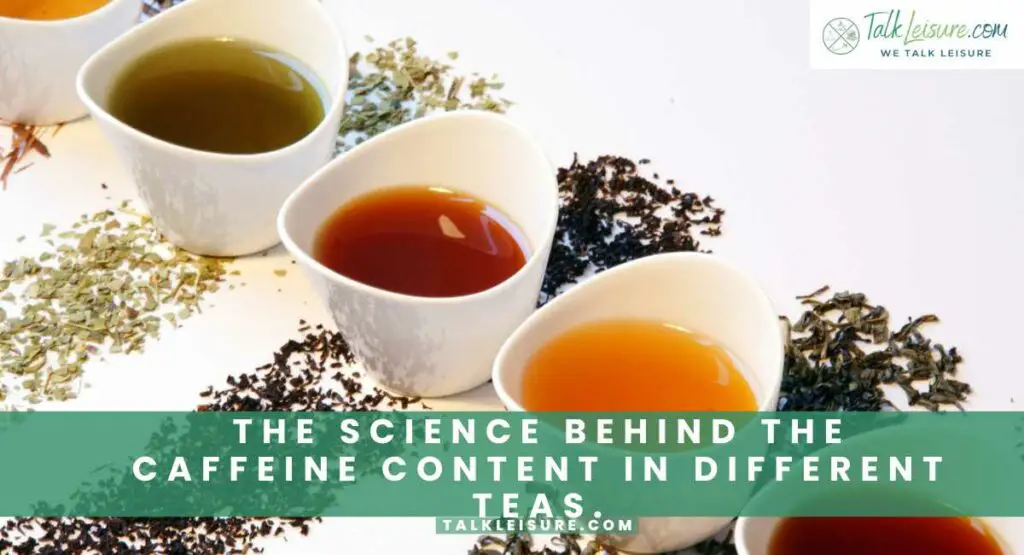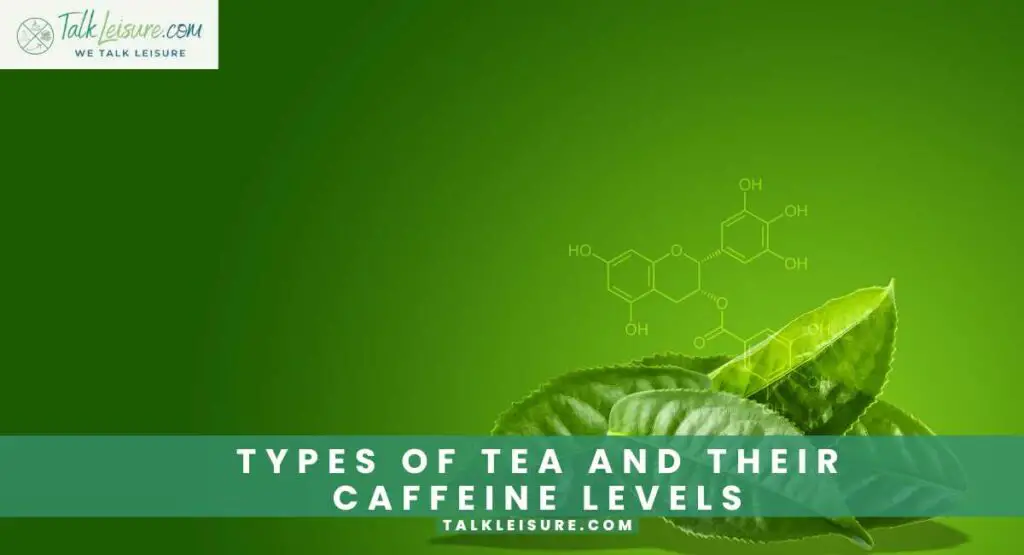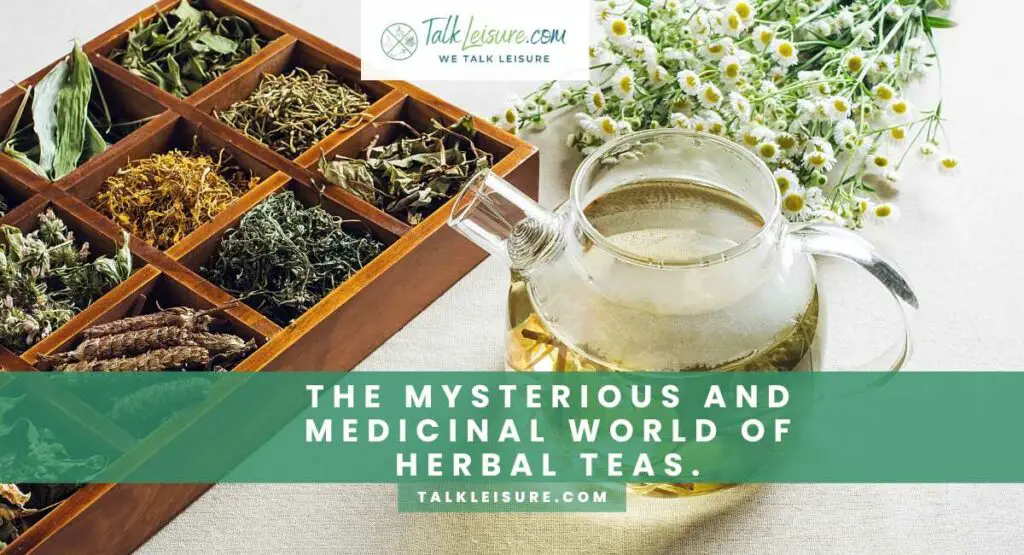Welcome to the enchanting realm where leaves dance in hot water and every sip tells a story—the world of tea. In this aromatic voyage, we delve into the captivating universe of caffeine, the hidden orchestrator behind the flavors.
The caffeine content in different teas is influenced by factors like processing, oxidation, and plant variety. Green tea tends to be lighter, while black tea boasts a bolder kick. Understanding these intricacies enriches our appreciation of the science behind tea caffeine.
From the delicate embrace of green tea to the robust notes of black, the elegance of white, the complexity of oolong, and the soothing herbal infusions, each cup carries its caffeine tale.
Join us as we unravel the secrets, exploring factors influencing caffeine content and guiding you to sip responsibly. Get ready for a journey where every tea leaf whispers, and every infusion beckons exploration.
Also read: The passionate debates and preferences: Loose leaf vs. tea bags.

Introduction to Caffeine in Tea
Brief Overview of Caffeine and its Presence in Tea
Caffeine is a natural stimulant belonging to the class of compounds known as xanthines.
It is found in varying amounts in the seeds, leaves, and fruits of some plants, providing a stimulating effect on the central nervous system.
Tea, derived from the leaves of the Camellia sinensis plant, is one of the most widely consumed beverages globally. It naturally contains caffeine, making it one of the sources of this stimulant. The caffeine content in tea can vary depending on factors such as tea type, processing methods, and brewing techniques.
Importance of Understanding Caffeine Content for Tea Enthusiasts
Understanding the caffeine content in tea is crucial for several reasons:
- Personal Preferences
Tea enthusiasts may have individual preferences for caffeine intake. Some may seek the stimulating effects of caffeine, while others may prefer lower-caffeine or caffeine-free options.
- Health Considerations
Caffeine sensitivity varies among individuals, and health conditions may influence the amount of caffeine one can comfortably consume. Awareness of caffeine content assists in making choices aligned with personal health considerations.
Knowledge of how brewing factors, such as time and temperature, influence caffeine extraction empowers tea drinkers to control the strength of their brews, tailoring them to their desired caffeine levels.
- Culinary and Cultural Appreciation
Understanding the caffeine nuances in different tea types contributes to a richer appreciation of the diverse world of tea. It allows for a more nuanced exploration of flavors and aromas associated with various tea varieties.
In essence, a foundational understanding of caffeine in tea enhances the tea-drinking experience, providing tea enthusiasts with the knowledge needed to make informed choices that align with their preferences and well-being.
Types of Tea and Their Caffeine Levels

Green Tea: Unveiling the Caffeine Secrets
Factors influencing caffeine content in green tea:
- Varietal differences: Different types of green tea plants, such as Camellia sinensis varieties, may have varying caffeine concentrations. For example, Japanese green teas like Matcha and Gyokuro may have higher caffeine than Chinese green teas like Dragon Well (Longjing).
- Growing conditions: Soil quality, climate, and altitude influence the nutrient content of tea leaves, including caffeine. Teas grown at higher altitudes might have a different flavor profile and caffeine content than those grown at lower elevations.
- Harvesting time: The timing of harvesting can affect caffeine levels. Generally, younger leaves and buds tend to have higher caffeine content. The first flush (spring harvest) is known for having leaves with higher caffeine levels compared to later flushes.
- Processing methods: The way tea leaves are processed post-harvest plays a role. Matcha, for instance, involves shade-growing the leaves, resulting in higher caffeine content.
Varieties with higher or lower caffeine concentrations:
- Matcha: This powdered green tea includes the entire leaf, resulting in a higher caffeine concentration compared to other green teas.
- Sencha: A common Japanese green tea, it typically has moderate caffeine content. The leaves are usually steamed and dried.
- Gyokuro: Grown in the shade for a few weeks before harvest, Gyokuro tends to have higher caffeine levels due to reduced photosynthesis.
Black Tea: The Bold Flavor and Caffeine Connection
How oxidation affects caffeine levels in black tea:
- Oxidation during processing: Black tea undergoes full oxidation, a chemical reaction that changes the color and flavor of the tea leaves. This process tends to increase the caffeine content.
- Oxidation period: Longer periods of oxidation often lead to higher caffeine levels. Teas like Assam, which undergo a longer oxidation process, are known for their bold flavor and higher caffeine content.
- Leaf size: Broken or crushed leaves may release more caffeine during brewing than whole leaves.
Exploring popular black tea varieties and their caffeine content:
- Assam: This Indian black tea is known for its robust flavor and is typically higher in caffeine compared to some other black teas.
- Darjeeling: Often considered the “Champagne of teas,” Darjeeling black tea has a lighter flavor and lower caffeine compared to Assam.
- English Breakfast: A blend of black teas, English Breakfast often includes strong and more caffeinated teas like Assam.
White Tea: Delicate Flavor, Surprising Caffeine
Introduction to white tea and its caffeine nuances:
- Made from young leaves and buds: White tea is minimally processed and is made from the young leaves and buds of the tea plant. These parts generally have a lower caffeine content.
- Minimal processing: White tea undergoes minimal processing, which helps preserve its natural compounds, including caffeine.
Factors affecting caffeine levels in white tea leaves:
- Leaf part used: Buds usually have lower caffeine than more mature leaves, contributing to the generally lower caffeine content of white tea.
- Processing method: The method of drying the tea leaves can impact caffeine levels. Sun-dried white teas may retain lower caffeine levels compared to those dried indoors.
Oolong Tea: The Middle Ground of Caffeine Complexity
Unique processing methods and their impact on caffeine:
- Partial oxidation: Oolong tea undergoes a semi-oxidation process, falling between green and black tea. This partial oxidation contributes to its unique flavor profile and can affect caffeine levels.
- Variability: Caffeine content in oolong teas can vary widely. Lighter oolongs may have caffeine levels closer to green tea, while darker oolongs can approach black tea levels.
Recognizing different oolong teas and their caffeine profiles:
- Tie Guan Yin: A lighter oolong with floral notes, it tends to be lower in caffeine compared to more heavily oxidized oolongs.
- Da Hong Pao: A darker oolong with bolder flavors, it may have higher caffeine content compared to lighter oolongs.
Herbal Teas: Caffeine-Free or Not?
Clarifying common misconceptions about herbal teas:
- True herbal teas (infusions): Herbal teas made from herbs, fruits, flowers, or other plant parts are naturally caffeine-free. Examples include chamomile, peppermint, and hibiscus.
- “Herbal” teas with true tea: Blends marketed as herbal teas may contain true tea (Camellia sinensis) along with herbs. In such cases, the tea component contributes caffeine.
Examining the caffeine presence in specific herbal infusions:
- Yerba mate and guayusa: While not technically teas, these herbal infusions come from plants containing natural caffeine.
- Decaffeinated herbal teas: Some herbal blends labeled as decaffeinated have undergone processes to remove caffeine, making them suitable for individuals looking to avoid caffeine altogether.
Caffeine Extraction and Infusion

The Science of Steeping: Caffeine Release
Brewing Time and Temperature Influence on Caffeine Extraction:
- Brewing Time: The longer tea leaves steep, the more caffeine is extracted. During the steeping process, hot water interacts with tea compounds, drawing caffeine out of the leaves. For those seeking lower caffeine levels, shorter steeping times can be employed.
- Brewing Temperature: Higher temperatures generally lead to greater caffeine extraction. However, this also influences the overall flavor profile. Some compounds that contribute to bitterness are extracted more readily at higher temperatures. Adjusting the temperature allows for a balance between caffeine content and desired taste.
Tips for Controlling Caffeine Levels Based on Brewing Techniques
- Short Steeps: Opting for shorter steeping times, such as 1-2 minutes, can result in a milder cup with lower caffeine content. This is especially useful for green and white teas.
- Temperature Adjustment: Experimenting with water temperature provides a means to manage caffeine levels. Lower temperatures, around 160-175°F (71-80°C), may extract fewer bitter compounds while still obtaining desirable flavors.
- Multiple Infusions: Some teas can be steeped multiple times. The first infusion often extracts more caffeine, while subsequent infusions may have less. This approach is common in Chinese tea culture, particularly with oolong and pu-erh teas.
Tea Plant Varieties and Caffeine Production
Role of Camellia sinensis Varieties in Caffeine Content:
- Camellia sinensis Types: There are several varieties of the Camellia sinensis plant, each contributing to different tea types. While the basic genetic makeup remains the same, variations exist in caffeine content. For instance, Camellia sinensis var. assamica, commonly found in Assam and some other Indian teas, tends to have higher caffeine than Camellia sinensis var. sinensis.
- Tea Processing: Caffeine content can also be influenced by the way tea is processed. For example, green tea, which undergoes minimal oxidation, generally retains less caffeine than fully oxidized black tea.
Influence of Cultivation Practices on Caffeine:
- Altitude: Tea plants grown at higher altitudes often produce leaves with more complex flavors and potentially higher caffeine content. The slower growth at higher altitudes can lead to a concentration of compounds, including caffeine.
- Fertilization: The use of fertilizers and other cultivation practices can impact the nutrient composition of tea leaves, including caffeine. Well-fertilized plants may produce leaves with slightly higher caffeine content.
- Shading: Techniques such as shading, commonly employed in the production of Japanese green teas like Gyokuro and Matcha, can influence caffeine levels. Reduced exposure to sunlight may lead to increased caffeine production as the plant responds to the stress of lower light.
Understanding these factors allows tea enthusiasts to appreciate the complexity of caffeine content in their favorite brews and provides avenues for adjusting preferences based on personal taste and desired caffeine levels.
Measuring Caffeine Content

Caffeine Measurement Techniques
Overview of Methods for Measuring Caffeine in Tea:
- High-Performance Liquid Chromatography (HPLC): HPLC is a widely used method that separates and quantifies caffeine in tea. It provides precise measurements and is considered a standard in caffeine analysis.
- UV Spectrophotometry: This method measures the absorption of ultraviolet light by caffeine. While less precise than HPLC, it offers a cost-effective alternative for routine analysis.
- Near-Infrared Spectroscopy (NIRS): NIRS is a non-destructive technique that analyzes the interaction between near-infrared light and the chemical composition of tea leaves. It provides rapid results but may have limitations in accuracy compared to HPLC.
- Mass Spectrometry: Mass spectrometry measures the mass-to-charge ratio of caffeine molecules. It is highly sensitive and accurate but is often used in research settings due to its complexity and cost.
Pros and Cons of Different Measurement Approaches
- HPLC:
- Pros: Highly accurate and reliable. Widely accepted as the standard method for caffeine analysis.
- Cons: Requires specialized equipment and expertise. More time-consuming compared to some other methods.
- UV Spectrophotometry:
- Pros: Cost-effective and relatively simple. Suitable for routine testing.
- Cons: May lack the precision of HPLC. Sensitivity can be lower.
- NIRS:
- Pros: Non-destructive and rapid. Can analyze large sample sets quickly.
- Cons: May have limitations in accuracy, especially with complex sample matrices.
- Mass Spectrometry:
- Pros: High sensitivity and accuracy. Useful in research settings for detailed analyses.
- Cons: Expensive equipment and technical expertise required. Less practical for routine testing.
Labelling and Consumer Awareness
Significance of Accurate Caffeine Labeling for Consumers:
- Informed Choices: Accurate labeling empowers consumers to make informed choices about their tea consumption, especially for individuals sensitive to caffeine or those looking to manage their intake.
- Health Considerations: Some individuals, such as pregnant women or those with certain health conditions, may need to monitor their caffeine intake. Accurate labeling assists them in making suitable choices.
Tips for Interpreting Tea Packaging Information Related to Caffeine:
- Check Serving Size: Caffeine content is often listed per serving. Pay attention to the suggested serving size to accurately gauge the caffeine you’ll consume.
- Tea Type Matters: Different types of tea inherently have varied caffeine levels. Understanding the general caffeine content of green, black, white, oolong, and herbal teas helps in making choices aligned with personal preferences.
- Consider Brewing Factors: The way you prepare tea affects caffeine content. Brewing time, water temperature, and the amount of tea leaves all contribute to the final caffeine concentration in your cup.
- Read Labels Carefully: Look for specific caffeine content information on tea packaging. Some teas may have naturally lower or higher caffeine levels, and this information can guide your selection.
- Be Aware of Blends: If the tea is a blend, especially with herbs or other flavorings, check if caffeine is added. Some blends include true tea leaves along with herbs, impacting the overall caffeine content.
Accurate labeling combined with consumer awareness allows tea enthusiasts to enjoy their favorite brews while aligning with their desired caffeine intake levels and health considerations.
Caffeine Sensitivity and Health Considerations

Individual Variability in Caffeine Sensitivity
Exploring How Individuals React Differently to Caffeine:
- Metabolism: The rate at which the body metabolizes caffeine varies among individuals. Some people process caffeine quickly, while others do so more slowly, affecting how long the stimulating effects last.
- Genetics: Genetic factors play a role in caffeine sensitivity. Certain genes influence how efficiently the body breaks down and clears caffeine from the system.
- Enzyme Activity: The activity of enzymes involved in caffeine metabolism, such as cytochrome P450 1A2, differs among individuals. This enzyme is responsible for breaking down caffeine in the liver.
Factors Influencing Personal Caffeine Tolerance:
- Age: Sensitivity to caffeine can change with age. Children and older adults may be more sensitive, and metabolism can slow down in older age.
- Weight and Body Composition: Individuals with lower body weight and less body fat may feel the effects of caffeine more intensely as there is less tissue to distribute it.
- Caffeine Habituation: Regular caffeine consumers may develop a tolerance over time. Habitual users often experience reduced sensitivity and may need higher doses to achieve the same stimulating effects.
Health Implications of Tea Caffeine
Discussing Potential Health Benefits of Moderate Caffeine Intake:
- Antioxidant Properties: Tea, especially green tea, contains antioxidants that can help combat oxidative stress in the body. These antioxidants contribute to overall health and may have protective effects.
- Mental Alertness: Caffeine is a natural stimulant that can enhance mental alertness, concentration, and mood when consumed in moderation.
- Metabolic Effects: Caffeine may have a modest impact on metabolism, potentially aiding in weight management.
Addressing Concerns About Excessive Caffeine Consumption:
- Insomnia and Sleep Disturbances: Consuming caffeine, especially in the afternoon or evening, can interfere with sleep. Individuals sensitive to caffeine should be mindful of their intake, especially close to bedtime.
- Increased Heart Rate and Blood Pressure: High doses of caffeine can lead to temporary increases in heart rate and blood pressure. Individuals with cardiovascular conditions should consult with a healthcare professional.
- Anxiety and Jitters: Excessive caffeine intake can lead to feelings of anxiety and jitteriness. Individuals prone to anxiety may be more susceptible.
- Digestive Issues: Some people may experience gastrointestinal discomfort, such as acid reflux, with high caffeine intake.
- Dependency and Withdrawal: Regular consumption of caffeine can lead to dependency, and abrupt cessation can result in withdrawal symptoms like headaches and irritability.
- Pregnancy Concerns: Pregnant individuals should limit caffeine intake due to potential links to adverse pregnancy outcomes. It’s advisable to consult with a healthcare provider for personalized guidance.
In summary, while moderate caffeine consumption, including that from tea, may offer certain health benefits, it’s essential for individuals to be aware of their own sensitivity, consider their health status, and make informed choices about their caffeine intake. Consulting with healthcare professionals can provide personalized guidance based on individual health considerations.
Conclusion
In conclusion, our exploration into the world of tea caffeine unveils a rich tapestry of flavors and complexities. From the subtle elegance of white tea to the boldness of black, each variety offers a unique caffeine experience.
Key takeaways include understanding factors influencing caffeine content and recognizing diverse profiles in green, black, oolong, and herbal teas. As you embark on your tea journey, savor the nuances responsibly.
Appreciate the dance of flavors, explore different varieties, and sip consciously. Tea is not just a beverage; it’s a delightful voyage—navigate it wisely and enjoy the endless possibilities steeped in every cup. Cheers to the art of tea!
Frequently Asked Questions
- Which tea is healthier green or black?
Both green and black teas offer health benefits, but they have distinct properties. Green tea is rich in antioxidants like catechins, renowned for its potential health perks. Black tea, while containing antioxidants, undergoes oxidation, altering its composition. Ultimately, the healthiness depends on individual preferences and health goals.
- Does black tea lighten skin?
There’s no scientific evidence to support the idea that black tea can lighten skin. While black tea does contain antioxidants that can have various health benefits, it is not specifically known for its skin-lightening properties. If you’re looking to address skin concerns, it’s advisable to consult with a dermatologist for personalized advice and explore skincare products specifically designed for your needs.
- Why does black tea have more caffeine?
Black tea generally has more caffeine than green tea due to differences in processing. The oxidation process that black tea undergoes increases caffeine content. The longer fermentation period and exposure to oxygen result in a bolder flavor and higher caffeine levels compared to the milder, less-oxidized green tea. However, the exact caffeine content can vary based on factors like the tea variety, brewing time, and water temperature.










